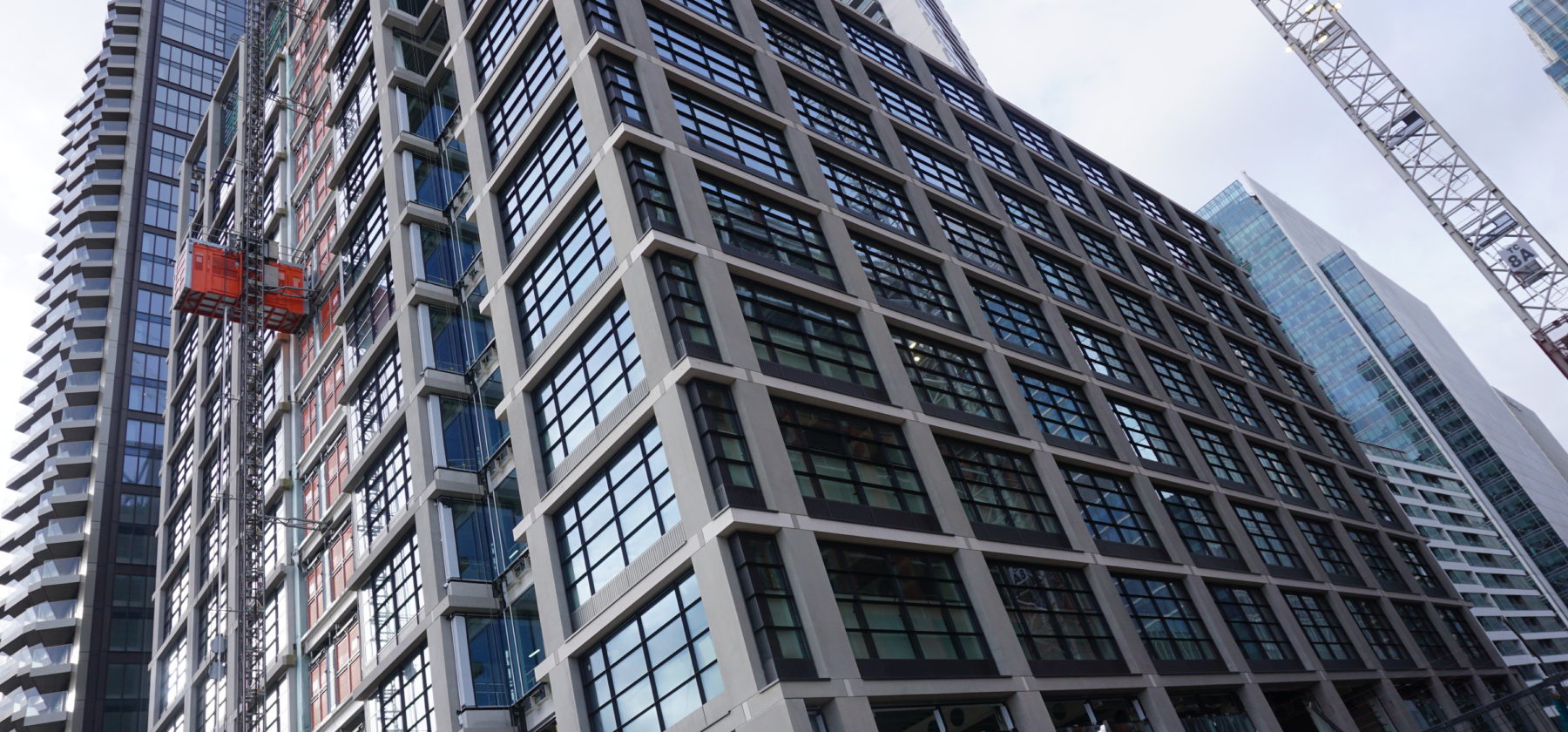This project is a 13-storey commercial office building consisting of basement levels B3 & B2, ground to level inclusive, roof and roof mezzanine. The main air handling units and fans are located on basement levels B3 & B2, level 1 and the roof (7 no AHUs and 18 no fans). The ground floor of the building contains the entrance lobby and retail space. Below ground, the buildings are linked to a shared site-wide basement, including park and loading bay facilities for deliveries and waste management.
Early involvement with the CWC team allowed Imperial to secure the project and set up a CAD team in preparation of drawings before commencement on site.
The Imperial team organised and attended many meetings with the client and consultant during the pre-construction phase of the project, to ensure all plant and equipment was spec compliant.
This was essential for IDSL to comply with the Wood Wharf D1-D2 project requirements. CWC tasked all subcontractors with helping them to achieve the Considerate Constructor Scheme ‘Ultra Site’ standards (an ‘Ultra Site’ is one which demonstrates and promotes the very highest standards within the Scheme and actively seeks to improve not only its own performance but that of the wider construction industry through its supply chain). IDSL committed to cooperate fully with CWC on working towards achieving this standard. This was the first project on the entire Canary Wharf estate for which CWC/IDSL have aimed to achieve this standard.
To achieve the ‘Ultra Site’ standard, IDSL was tasked with taking a standard design and looking at developing the whole project through to completion, ensuring that the AHU fan selection and spatial allowance were of a high grade through to completion.
Due to the extent of the requirements associated with the new design, it was essential to select equipment with an energy consumption that did not create a risk to the overall power output. The IDSL remit was to ensure that through selection we could ensure compliance to maintain the efficient of the equipment. The process involved weeks of research into the selected plant we originally intended to provide, going through a very stringent selection process where we discussed options and issues involving risk with the project team, from the initial concept from both design and selection. IDSL selected the complete system and the materials to match, demonstrating our commitment to compliance and insurances regarding energy efficiency.
The power output for the supply and extract AHU fans was an issue, as the whole design process had been based on a specific type of motor specified. IDSL had to review how we could reduce the number of AHU fans whilst still improving the energy efficiency with the initial selection of the fans. It was evident that the fans would be at risk if there were reduced in size, so IDSL decided to work with the suppliers on selecting a different fan type (but reduce the number of fans required) with a view to reduce the overall power consumption by achieving a greater level of performance in the overall ductwork systems, and making the fan run more efficiently with a greater scope and range of compliance.
Normally, the fans would be selected to ensure compliance on the static fan pressures from the design team. This design would take into account resistance in the ductwork systems, along with a certain amount of leakage allowance on the whole of the ductwork systems installed. IDSL worked through all the fan selections with the suppliers, confirming that they would achieve a greater energy efficiency. Thanks to the information provided, the suppliers were confident in delivering fully compliant AHU fans with a reduced system operational power output and greater fan efficiency than those originally specified.
In conjunction with suppliers and consultants, various meetings were held over a period of several months. IDSL tabled a solution whereby a change in fan type would generate a saving representing 213kW per 15-hour day. This demonstrated that the alternative fan efficiencies were fan greater, the fan speeds were significantly less, and therefore the AHU noise levels were also significantly less. This proposal was accepted by CWC and the consultant, and demonstrated that we had successfully contributed towards CWC achieving the Considerate Constructor Scheme ‘Ultra Site’ standard.

